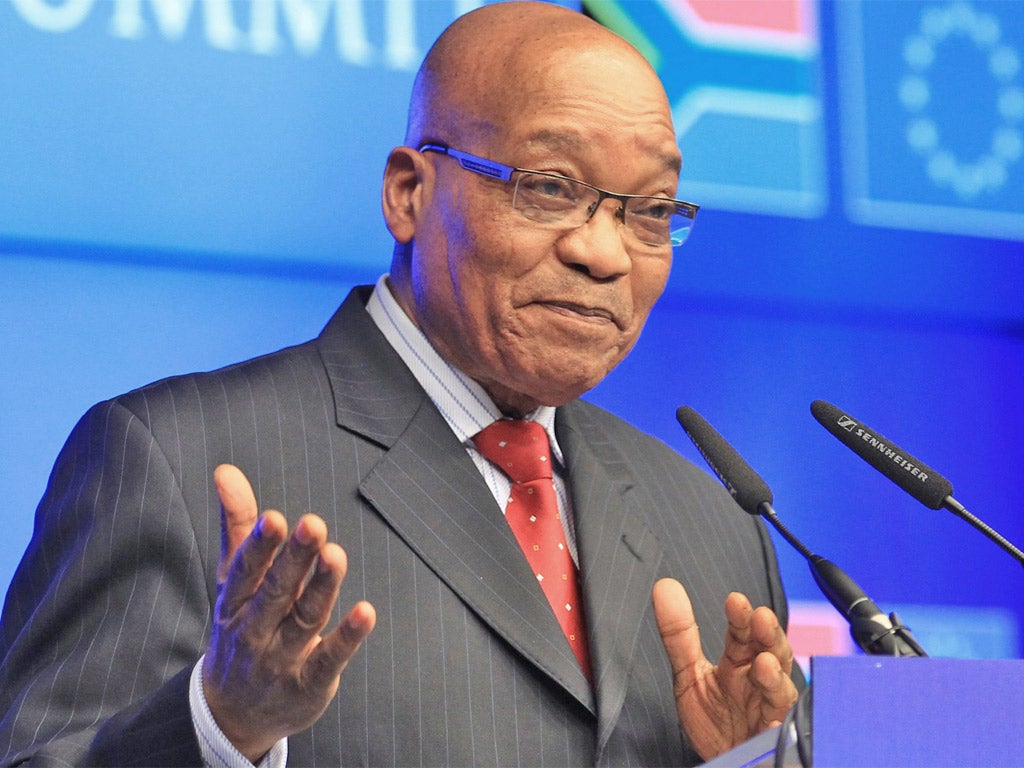Marikana miners end strike after agreeing a 22 per cent pay deal

Your support helps us to tell the story
From reproductive rights to climate change to Big Tech, The Independent is on the ground when the story is developing. Whether it's investigating the financials of Elon Musk's pro-Trump PAC or producing our latest documentary, 'The A Word', which shines a light on the American women fighting for reproductive rights, we know how important it is to parse out the facts from the messaging.
At such a critical moment in US history, we need reporters on the ground. Your donation allows us to keep sending journalists to speak to both sides of the story.
The Independent is trusted by Americans across the entire political spectrum. And unlike many other quality news outlets, we choose not to lock Americans out of our reporting and analysis with paywalls. We believe quality journalism should be available to everyone, paid for by those who can afford it.
Your support makes all the difference.Striking platinum miners agreed to go back to work last night, ending a six-week industrial dispute that claimed 43 lives and put President Jacob Zuma's government under severe strain.
The workers at Lonmin's Marikana mine, west of Pretoria, accepted the offer of a 22 per cent overall pay increase – for most of them far short of the 12,500 rand (£932) monthly minimum wage they had been demanding. They said they would return to work on Thursday.
The settlement is likely to be welcomed by mining investors as a vindication of the firm stance adopted by the government. But it will do little to build bridges between South Africa's impoverished and restive masses and a political leadership that appears increasingly distant from their concerns.
It was not clear last night whether striking gold miners would also go back to work but other platinum producers said their plants were running again.
As night fell at Marikana, about 3,000 striking miners who had gathered on a sports field broke into cheers at the announcement of the 22 per cent offer, brokered by the South African Council of Churches.
The strike at Marikana – the bloodiest and most politically damaging industrial unrest since the African National Congress came to power in 1994 – began on 10 August. The roots of the conflict go back to the boom years before the 2008 financial crisis, when mining multinationals abandoned centralised bargaining.
Since then, tens of thousands of platinum miners have been laid off.At the same time rivalry between South African mining unions has poisoned industrial relations.
At Marikana, 3,000 rock-drillers affiliated to a breakaway union demanded monthly salaries of R12,500 – representing a threefold increase for many. Nine people, including two police officers and three officials of the mainstream National Union of Mineworkers, died in incidents in the first week of the strike. On 16 August, armed police opened fire on strikers gathered on a hillside, killing 34 of them and injuring 78. Police were accused of using apartheid-era tactics and an international outcry followed when the judiciary charged 270 Marikana miners with the 34 murders.
The Justice Minister intervened and the charges were dropped. However, the impression remained that the ANC – and its government partners in Cosatu, a trade union confederation including the NUM – were doing the bidding of investors.
The dispute provided oxygen for Julius Malema, the ousted firebrand leader of the ANC Youth League. He called on mineworkers to bring the sector to its knees.
But the miners, and their breakaway union, were left isolated after police prevented Mr Malema from addressing miners at Marikana on Monday. At the same time, delegates at Cosatu's annual congress staged a show of unity. President Zuma was greeted with cheers and the leadership was re-elected unchallenged.
Join our commenting forum
Join thought-provoking conversations, follow other Independent readers and see their replies
Comments